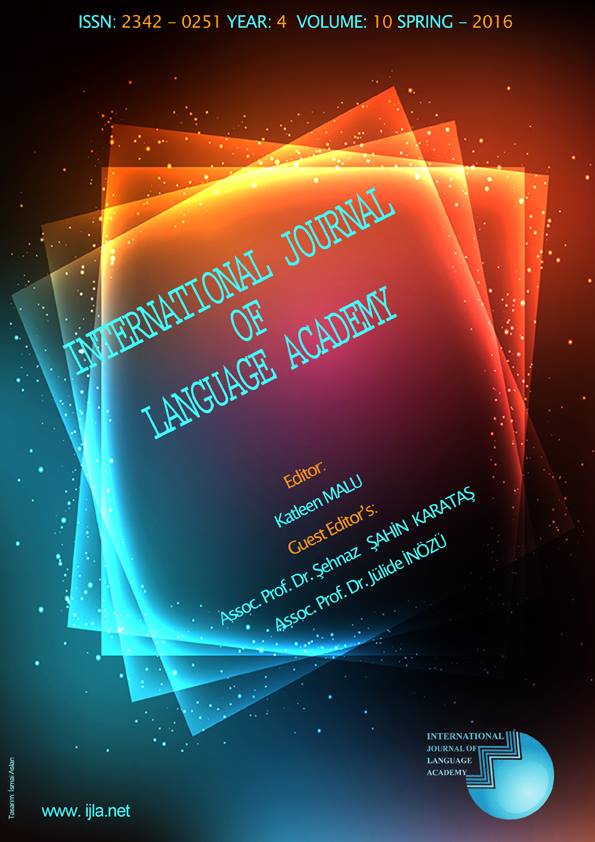Author :
Abstract
10. yüzyıldan itibaren tutku kelimesi Fransızca ya da İngilizcede Hz İsa’nın çektiği acılar için kullanıldı ve bu kelime ruhun hastalığı olarak değerlendirildi. Fakat günümüzde tutku kavramı değişim gösterdi. Tutku kavramı her şeyden önce klasik çağda Batı felsefesinde kendini göstermiştir, daha sonra da bu kavram psikoloji ve sosyolojide ortaya çıkmıştır. Tutku şiddetli ve sürekliliği olan duygu durumudur ve bu durum insanda psikolojik dengesizliklere de sebep olabilir. Psikoloji bilimi ise günümüzde tutku kavramını nesneye karşı yoğun, kendine özgü ve sürekli bir bağlılıkla kendini gösteren bir duygu durumu olarak ifade ediyor. Bu durum öznenin kişiliğini etkiliyor ve öznenin davranışlarının belirlenme sürecinde etkili oluyor. Öznenin bu tutkusal gelişimi tutkusal dizge üzerinde gösterilebilir. Tutkusal dizge evrelerden oluşur ve her bir evre dizge üzerinde gösterilebilir. Tutkusal dizge üzerinde bulunan bu evreler şu şekilde sıralanabilir: Tutkusal dizgenin ilk evresi düzenleyiş evresidir. İkinci evre duyarlılık evresi, üçüncü evre duygulanım evresi ve son evre ise ahlaki yönden değerlendirme evresidir. Metinlere kıyasla bu evreler değişim gösterebilir. Bazı evreler seçilebilir ya da evrelerin yerlerinde değişiklikler yapılabilir. Aşk romanları da bu evreleri içerir ve bu evreler romanın öznesinin tutkusal gelişiminin izlenmesine yardımcı olur. Halid Ziya Uşakligil’in ünlü romanı Aşk-ı Memnu da birçok tutkusal dizge içermektedir. Bu romandaki her bir tutkusal dizge evreler üzerinde incelenebilir.
Keywords
Abstract
The concept ‘passion’ was used to mention the pain of Christ in French and English since the 10th century and it was considered as the illness of the spirit. However the meaning of the concept ‘passion’ has changed nowadays. First it was being used at the west philosophy and later at the psychology and sociology in the classical age. Passion is an affective state which is violent and durable. It might cause psychological imbalance as well. The psychology science explains the passion term such as intensify, exclusive and durable attachment with an object. The passional progress of the subject can be shown on the passional schema. Passional schema contains phases and each phase can be shown on the schema. We can mention these phases such as disposition phase, second one is sensitizing phase, third one is emotion phase and the last one is moralization phase. Compared with texts these phases can be changed or the rows can be changed. Love novels contain the phases as well and these phases enable to follow up the passional progress of novel’s subject. The famous novel of Halid Ziya Uşakligil, Aşk-ı Memnu contains too many passional schema as well. Each passional schema which are in this novel might be observed on the phases.
Keywords
- Bertrand, D. (2000). Précis de sémiotique littéraire. Paris : Nathan.
- Courtés, J. (1991). Analyse sémiotique du discours. Paris : Hachette.
- Çorbacıoğlu Gönezer, E. (2014). L’analyse figurative et affective des affiches publicitaires. İzmir: Université de Dokuz Eylül. La thèse de doctorat inedite.
- Fontanille, J. (1998). Sémiotique du discours. Limoges : Pulim.
- Fontanille, J. (1999). Sémiotique et littérature. Paris : Puf.
- Fontanille, J. et Zilberberg, C. (1998). Tension et signification. Sprimont : Mardaga.
- Greimas, A.J. et Courtés, J. (1979). Sémiotique, Dictionnaire Raisonné De la Théorie Du Langage. Tome I. Paris : Hachette.
- Greimas, A.J. et Courtés, J. (1986). Sémiotique, Dictionnaire Raisonné De la Théorie Du Langage. Tome II. Paris : Hachette.
- Günay, V. D. (2004). “La Dimension Passionnelle du Discours” 8ème Congrès de l'Association Internationale de Sémiotique à Lyon (France).
- Rey-Debov, J. et Rey, A. (2004). Le Nouveau Petit Robert. Paris : Dictionnaire Le Robert.
- Uşaklıgil, H.Z. (2010). Aşk-ı memnu. İstanbul : Özgür.





